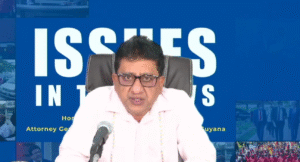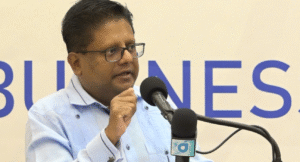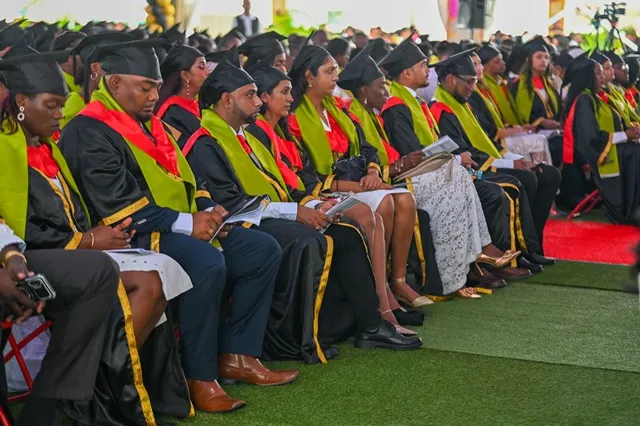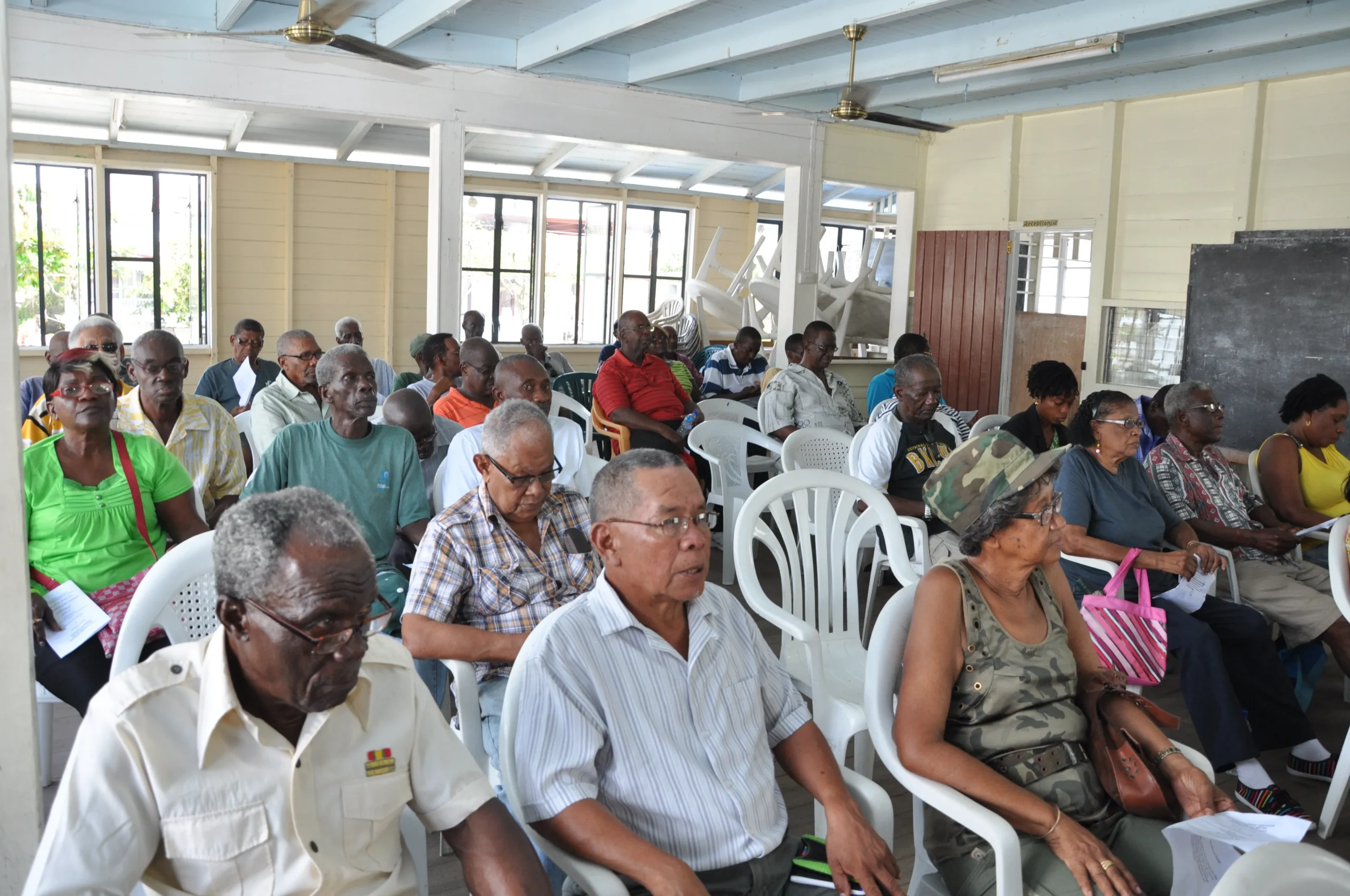Introduction: From Bureaucracy to Service
Walk into a government office in Guyana today, and you might be surprised. The lines are shorter. Some services have moved online. You might even be greeted with a smile by a public servant who seems, dare we say, motivated. This is a stark contrast from the not-too-distant past when the civil service was often seen as a lethargic, red-tape-bound relic of colonial times – “sleeping ministry syndrome,” the cynics called it.
But as Guyana’s fortunes rise, there’s a realization at the highest levels: a 21st-century economy cannot be run with a 20th-century bureaucracy. Reforming the civil service – making it more efficient, transparent, and responsive – has thus become a central, if under-discussed, plank of Guyana’s transformation. The current PPP/C administration, led by President Irfaan Ali, is quietly but steadily implementing changes that, taken together, amount to a bureaucratic revolution of sorts.
It’s happening on multiple fronts: better pay and incentives for civil servants, aggressive training programs and scholarships to build capacity, digitization of government processes, and reactivation of dormant oversight bodies to enforce accountability. Crucially, the narrative is shifting – the civil service is being recast not as a dumping ground for patronage jobs, but as the engine of national development staffed by professionals. This article explores these changes, the challenges that remain, and how they tie into the broader governance ethos of a country on the rise.
Paying for Performance: Motivating the Public Servant
One of the first things the PPP/C government did on taking office in August 2020 was to improve compensation for public servants. It sounds basic, but after years of wage freezes or token increases, this was a needed shock. In 2021, a 7% across-the-board raise was granted, followed by 8% in 2022. In 2023, another adjustment came, and for 2024, a retroactive salary increase was promised to all public servants from January 1. Additionally, the income tax threshold was raised significantly – from $65,000 to $100,000 monthly over a couple years – effectively letting workers keep more of their pay.
The government also reinstated the one-month tax-free year-end bonus for the disciplined services (military, police), which had been halted by the previous administration. And in a broader stroke of generosity (some call it strategy), they issued one-off cash grants of $100,000 in 2023 to all public sector employees as a cost-of-living support.
The message in these measures was clear: we value our public workers. Vice President Bharrat Jagdeo (also the ruling party’s General Secretary) emphasized the government’s “unwavering commitment” to the well-being of public servants. Beyond political talk, injecting money into people’s pockets had concrete effects. Morale in many offices lifted; employees felt noticed. A junior clerk in a regional office told me, “For the first time, I can actually plan to save a little or take a course. Before, my salary was just hand-to-mouth.”
Better pay doesn’t automatically produce better performance, but it’s hard to get the latter without the former. These increases and bonuses helped stem the exodus of talent. Previously, many of the best and brightest avoided or left the civil service for private sector or migration – why slave for $80k GYD (≒$400 USD) a month as an analyst when you could bartend for more? Now, with salaries inching up and promises of more to come, public jobs are looking attractive again, especially when paired with the intangible lure of nation-building pride.
Building Capacity: Scholarships and Training Galore
Yet money alone isn’t enough to reform a system; capacity and skills matter immensely. Recognizing a brain drain and skills gap, the government launched what can only be described as an education bonanza for Guyanese citizens, many of whom feed into the civil service. The flagship initiative is the Guyana Online Academy of Learning (GOAL) scholarship program. Since 2021, over 21,000 scholarships have been awarded across all regions, with a focus on women and hinterland youth – and by late 2024, that figure was touted to reach 29,000. These scholarships enable Guyanese to earn tertiary certificates and degrees online from universities abroad, in fields ranging from IT and accounting to healthcare and engineering.
Why is this relevant to the civil service? Two reasons: first, many scholarship recipients are current public employees upgrading their qualifications. Second, when bond terms apply, scholars often commit to work for the government after graduating. So GOAL is directly feeding the public sector with better-trained personnel. The inclusion of 15,000+ women also means more gender equity in higher-skilled roles.

Additionally, specialized training has been revitalized. The previously moribund Public Service Training Division was revamped with accessible facilities (they literally installed ramps and a smart classroom to include persons with disabilities). There’s a stronger induction program for new hires, and continuous workshops on everything from customer service to procurement rules. Even something as prosaic as retraining police prosecutors on the new plea bargaining law (to ease court backlogs) is part of this capacity building – it shows the commitment to ensure laws and systems work effectively by training the people who operate them.
And let’s talk about youth induction. In the 1990s, Guyana had a dedicated Public Service Ministry and a scholarship scheme that produced many of today’s top bureaucrats. That declined in later years. The current government not only restored the Public Service Ministry but also is pursuing merit-based recruitment. They often speak of encouraging bright university grads to join the public service rather than seeing it as second fiddle to the private sector. One incentive: fast-tracking promotions for high performers, which we’re seeing in some ministries where young directors are being appointed.
One of the more creative projects is the Legislative Drafting Programme under the Attorney General’s office – training lawyers to become legislative drafters, addressing a chronic shortage in that niche skill which is vital for crafting quality laws. It’s an example of identifying bottlenecks (few drafters meant slow law-making) and resolving it via training.
Digitization: E-Government Emerges
If you’ve ever spent a day in a third-world government queue, you know inefficiency intimately. Guyana’s leadership is determined to banish that image by embracing digital solutions. The Finance Minister Dr. Ashni Singh, who also oversees the public service, is spearheading a national electronic ID card rollout in 2025. This E-ID will unify various government IDs (like NIS, TIN, etc.) into one, simplifying identification for services – a cornerstone for e-government platforms.
Already, the passport office switched to an online appointment system, slashing chaotic crowds. Next up, the government plans to implement an Electronic Passport Control System at the international airport to speed up immigration. In healthcare, a pilot Electronic Medical Records system is launching to modernize record-keeping at hospitals.
Perhaps the boldest is the One Guyana Digital Academy – a fully virtual secondary school platform for Grades 10-11, enabling students anywhere to access quality lessons online. By the end of 2025, an Education Management Information System (EMIS) will link 1,000+ schools for better data and admin.
These measures do a few things: they reduce human discretionary points (thus reducing opportunities for petty corruption or nepotism), and they increase efficiency and transparency. For civil servants, it means re-training to use new systems, but also freeing them from tedious manual tasks to focus on more complex work. Take “paper committals” in courts – by abolishing preliminary inquiries in favor of paper committal hearings (a form of written evidence submission), magistrates and prosecutors can clear cases faster. Technology is also enabling remote court hearings via e-court setups in prisons to avoid transport and security costs.
Another example: the Single Window electronic system for construction permits was launched, so investors no longer run office to office; they apply online and agencies coordinate behind the scenes. This not only accelerates business but also exemplifies the new ethos: the civil service as a facilitator, not an obstacle.

The national ICT backbone is expanding to support all this – fiber optic links in government agencies, expanding internet access to rural areas so people can actually use e-services. It’s a heavy lift, but with oil resources, they are investing in both infrastructure and cybersecurity (they’ve held workshops on protecting e-governance from cyber threats).
Accountability: Watchdogs and Reforms
It’s often said that “Personnel is policy”. Who gets hired, promoted, disciplined or fired in the civil service dictates how it performs. That’s why the reconstitution of constitutional service commissions is pivotal. The government moved swiftly to reestablish bodies that had lapsed: the Public Service Commission (hires and oversees civil servants), the Police Service Commission, Teaching Service Commission, Judicial Service Commission. These were reconstituted by 2022-2023 after being expired for years.
The Public Service Commission (PSC) in particular is key to merit-based HR in the civil service. Its chairman now also sits on the Police Service Commission, aligning security sector HR oversight. By having these commissions functional, the government signals respect for the separation of political leadership and professional bureaucracy – an important check and balance to ensure public servants serve any government faithfully.
Moreover, the Integrity Commission – which enforces financial disclosures by officials – got a healthy $112.5M budget boost and is working to tighten penalties for non-compliance. This is crucial to curb corruption. And indeed, Guyana has been prosecuting more corruption cases lately, even as the opposition clamors about transparency. The government at least has given anti-corruption bodies funding and autonomy on paper.
Another sphere of reform is justice and law. The government passed the Plea Bargaining and Paper Committal Acts in 2024, not traditionally “civil service” reform but part of wider governance improvement by reducing court backlogs and speeding up justice. They are also hiring 17 new judges and expanding the Court of Appeal from 5 to 9 judges, which will make the judiciary more efficient – again a service to the public. So the civil service reform isn’t isolated; it’s part of a comprehensive governance upgrade including judicial reform, electoral improvements (they allocated money to update GECOM, the elections body), and constitutional reform (a commission is currently reviewing the Constitution).
Importantly, performance culture is being infused. Ministries now have to produce annual performance reports tied to budget allocations. The President himself does impromptu community visits and often phones local officials on the spot to resolve issues – a bit of populism that also puts bureaucrats on notice that responsiveness matters.
Citizen-Centric Service: Slowly but Surely
These reforms ultimately aim to make government work for citizens. One can already see small wins: the processing time for re-migrant status applications dropped to 7 working days under new systems. Passports are now delivered in a week for normal applications, compared to a month before. There’s even an active effort to respond to citizen complaints on Facebook or via hotlines – a nod to accountability in the social media age.
A noteworthy citizen-centric initiative is the 911 emergency system overhaul being planned – recording all calls to ensure police respond and to track outcomes. This was announced after public complaints of calls going unanswered. It shows a willingness to listen and reform even at micro levels.
In remote areas, the government is expanding the use of community service officers (CSOs) – local youths trained to provide basic government services or liaise with central ministries. This decentralized service delivery, important in a country where many live far from ministry offices.
The mantra seems to be “taking government to the people.” Whether via online portals or local centers, the aim is to reduce the burden on the public to access what is their right. This is a significant philosophical shift from older bureaucratic culture where the citizen had to supplicate at the altar of the state. President Ali’s “One Guyana” slogan has an implicit promise of equity in service – every citizen, regardless of location or ethnicity, gets the same attention.
Political Will and Perception
No reform is successful without political will at the top. The PPP/C, keen to differentiate from its predecessors (and mindful that efficient service delivery wins votes), appears committed. Budget 2025 – Guyana’s first trillion-dollar budget – included hefty allocations for governance improvements. Leaders often speak about “rebuilding institutions” that had decayed. There’s a tinge of political one-upmanship in that narrative, but also truth that some agencies had become shell institutions by 2020.
However, critics argue more needs to be done to depoliticize the civil service. The opposition claims PPP/C loyalists get placed in key posts. The government counters that it has actually rehired some people fired under the previous APNU administration for perceived political reasons, thus professionalizing rather than politicizing. It’s a tug of war as old as independence. One test will be how the civil service conducts itself in the lead-up to the 2025 elections – impartially facilitating the process, or being dragged into partisan battles. So far, the signs lean positive: GECOM (elections commission) got new independent commissioners and funding to prepare early.
Another perceptual hurdle is public cynicism. Decades of poor service won’t be erased overnight by new systems. Patience at both ends is needed. The government is wise to trumpet success stories (like touting how many passports or birth certificates issued on time) to change the narrative. They’ve even engaged in PR like showing videos of an efficient Permit Center or highlighting a young scholarship grad now heading a department. These might seem propagandist, but they serve to reshape the image of the civil service from a butt of jokes to a source of pride.
Challenges Remaining: Old Habits Die Hard
Despite progress, challenges abound. Middle management inertia is one – not every old-school officer is thrilled about new ways or extra accountability. Some may quietly subvert changes. That’s why injecting fresh blood from the GOAL pool or from diaspora hires is important to shift culture. There’s also the risk of “brain drain 2.0” – with so much training, some fear once skilled, these individuals might still emigrate for higher pay abroad. The free tuition at University of Guyana (as of 2025) and better local opportunities hopefully reduce that risk.
Bureaucratic bloat is another issue. Historically, governments hired excess staff as a form of social support. The current government hasn’t indicated any cutbacks; if anything, they’re hiring more (teachers, healthcare workers, etc., to expand services). The key will be ensuring these hires address gaps and don’t become redundant over time. A leaner, meaner public service might be ideal, but Guyana’s unemployment and sociopolitical context mean a humane approach is needed – focusing on retraining rather than firing where automation replaces jobs.
Corruption, while tackled on some fronts, still lurks. Procurement is one area needing tighter oversight – though the Public Procurement Commission was reconstituted, it must actively vet big contracts to avoid cronyism. The influx of oil money can tempt malfeasance; the government will have to keep reinforcing ethical standards through both carrot (good pay) and stick (swift penalties via the Integrity and Audit institutions).
Conclusion: The Makings of a Modern State
Civil service reform doesn’t make flashy headlines like oil or mega-bridges, but it’s arguably the glue that holds everything together. Guyana seems to recognize that in this pivot point of its history. By professionalizing its bureaucracy, digitizing services, and empowering oversight bodies, the country is laying the governance foundation to manage its resource windfall wisely and deliver for its people.
International observers like the IMF have noticed improvements, praising Guyana’s efforts to strengthen institutions. Freedom House still flags issues (media harassment, etc., as per civicus reports) – a reminder that governance reform is multifaceted and ongoing. But purely on administrative reform, the trendline is positive.
For the average Guyanese, these changes might show up as small miracles: getting business registration done in a day, a police officer actually responding to a complaint, a government email account that actually replies. Each such experience rebuilds trust. And trust in institutions is perhaps the ultimate goal – that citizens believe their public service is there to serve, not hinder or exploit.
In the grand scheme, Guyana is attempting something noteworthy: avoiding the “resource curse” by simultaneously reforming state capacity as wealth increases. Many countries got rich too fast for their weak institutions to handle, leading to inefficiency or kleptocracy. Guyana’s leaders appear intent to buck that trend by supercharging institutional strength in tandem with economic growth.
We are witnessing the retooling of a state apparatus in real time. It’s not without hiccups, and the journey is far from over. But if Guyana succeeds, it will have proven that even a small state with a once troubled political history can, with the right mix of vision, incentives, and pressure, transform its government into a modern service-oriented machine – one that truly works for the “One People” it serves. And that might be one of Guyana’s most important oil-fueled legacies: a competent, transparent government that outlasts the oil itself.




